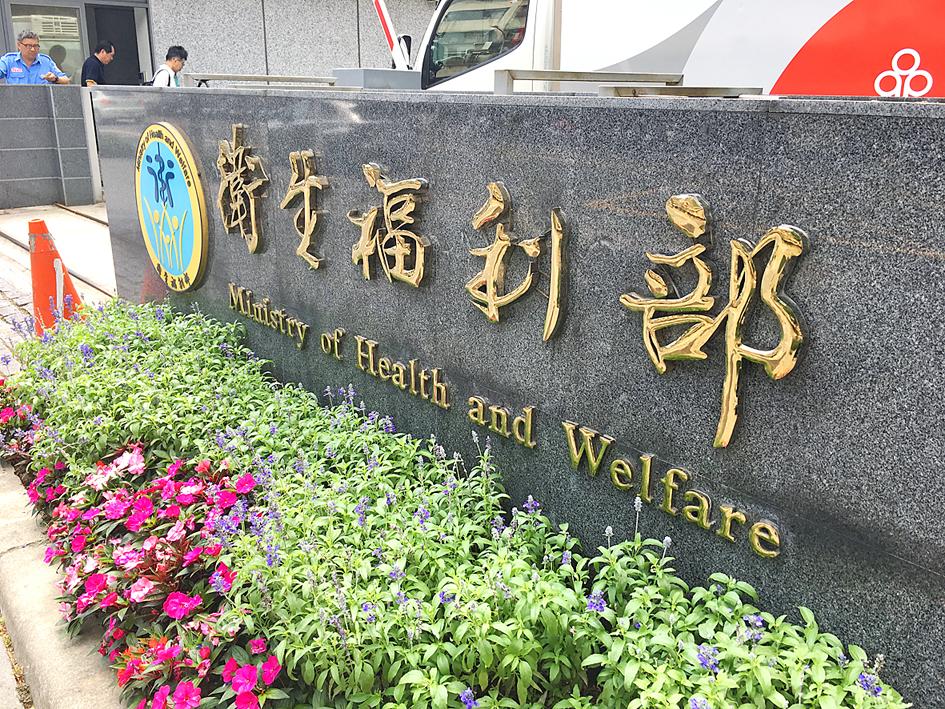While the life expectancy of Taiwanese newborns in 2018 reached 80.69 years, the number of years people spent in poor health hit a record high at 8.41 years, Ministry of Health and Welfare statistics showed on Saturday.
Healthy life expectancy is calculated by a person’s life expectancy minus the time they spend in ill health, such as the loss of mobility, disabilities and chronic disease, based on medical records and calculations about the years they live with disabilities.
The number of years that Taiwanese spend in poor health is increasing slowly, but steadily, rising by 0.46 years, or five-and-a-half months, between 2012 and 2018, Department of Statistics Lee Chiu-yen (李秋嬿) said.

Photo: Lin Hui-chin, Taipei Times
The trend corresponds to the phenomenon of Taiwan becoming a superannuated society, said Chiou Hung-yih (邱弘毅), a professor of public health at Taipei Medical University.
It also highlights the dual problem of people generally having an “irresponsible” attitude toward their health and the authorities not allocating enough funds under the National Health Insurance (NHI) system for education about maintaining good health, Chiou said.
The NHI system emphasizes treatment and is neglecting public health at large, he said.
Some people do not take their medicine on time and develop a protracted period of poor health, while others started an unhealthy lifestyle early on, he added.
Physicians only focus on treating patients and do not educate them about their health, as doing so would not bring them extra subsidies under the NHI system, he said.
That NHI premiums have not risen has also led many people to take treatment for granted and ignore what they can do for themselves to stay healthy, he said.
Chen Ying-jen (陳英仁), a geriatric specialist at Linkou Chang Gung Memorial Hospital, said the nation’s universal healthcare and quality caregivers means that people are living longer in poor health.
There is also a problem with with how Taiwanese view death, as many people would rather their family members live on life support than die, Chen said.
Taiwanese need more education about quality of life and how to deal with situations when all the medication and treatment available have failed, as well as the prospect of having to go into hospice care, he said.
Statistics showed that the number of years people lived in poor health dipped in 2016, which the ministry attributed to a major cold front that aggravated cardiovascular and lung problems and led to an increase in deaths, adding that pneumonia was the third-most common cause of death that year, and life expectancy was reduced by 0.2 years.

CROSS-STRAIT COLLABORATION: The new KMT chairwoman expressed interest in meeting the Chinese president from the start, but she’ll have to pay to get in Beijing allegedly agreed to let Chinese Nationalist Party (KMT) Chairwoman Cheng Li-wun (鄭麗文) meet with Chinese President Xi Jinping (習近平) around the Lunar New Year holiday next year on three conditions, including that the KMT block Taiwan’s arms purchases, a source said yesterday. Cheng has expressed interest in meeting Xi since she won the KMT’s chairmanship election in October. A source, speaking on condition of anonymity, said a consensus on a meeting was allegedly reached after two KMT vice chairmen visited China’s Taiwan Affairs Office Director Song Tao (宋濤) in China last month. Beijing allegedly gave the KMT three conditions it had to

STAYING ALERT: China this week deployed its largest maritime show of force to date in the region, prompting concern in Taipei and Tokyo, which Beijing has brushed off Deterring conflict over Taiwan is a priority, the White House said in its National Security Strategy published yesterday, which also called on Japan and South Korea to increase their defense spending to help protect the first island chain. Taiwan is strategically positioned between Northeast and Southeast Asia, and provides direct access to the second island chain, with one-third of global shipping passing through the South China Sea, the report said. Given the implications for the US economy, along with Taiwan’s dominance in semiconductors, “deterring a conflict over Taiwan, ideally by preserving military overmatch, is a priority,” it said. However, the strategy also reiterated

‘BALANCE OF POWER’: Hegseth said that the US did not want to ‘strangle’ China, but to ensure that none of Washington’s allies would be vulnerable to military aggression Washington has no intention of changing the “status quo” in the Taiwan Strait, US Secretary of Defense Pete Hegseth said on Saturday, adding that one of the US military’s main priorities is to deter China “through strength, not through confrontation.” Speaking at the annual Reagan National Defense Forum in Simi Valley, California, Hegseth outlined the US Department of Defense’s priorities under US President Donald Trump. “First, defending the US homeland and our hemisphere. Second, deterring China through strength, not confrontation. Third, increased burden sharing for us, allies and partners. And fourth, supercharging the US defense industrial base,” he said. US-China relations under

The Chien Feng IV (勁蜂, Mighty Hornet) loitering munition is on track to enter flight tests next month in connection with potential adoption by Taiwanese and US armed forces, a government source said yesterday. The kamikaze drone, which boasts a range of 1,000km, debuted at the Taipei Aerospace and Defense Technology Exhibition in September, the official said on condition of anonymity. The Chungshan Institute of Science and Technology and US-based Kratos Defense jointly developed the platform by leveraging the engine and airframe of the latter’s MQM-178 Firejet target drone, they said. The uncrewed aerial vehicle is designed to utilize an artificial intelligence computer